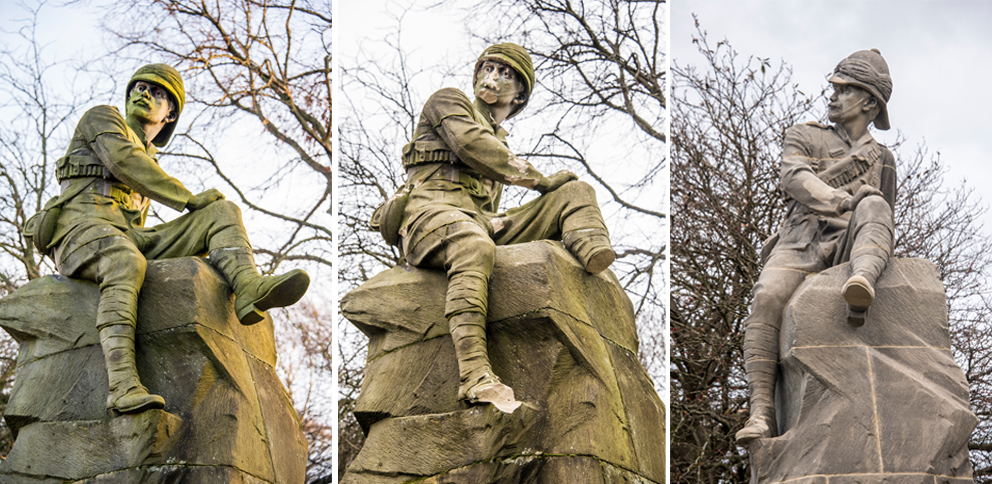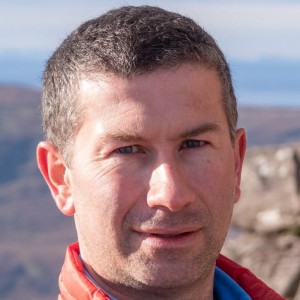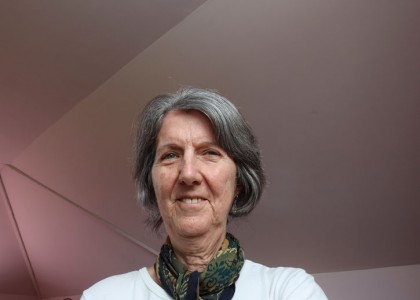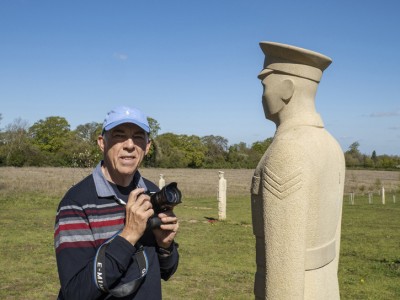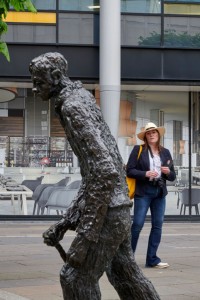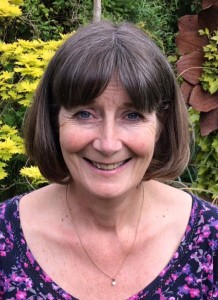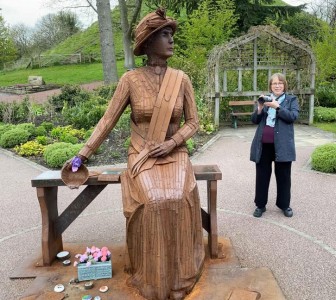The sculpture project enlisted two main types of volunteer: Volunteer Photographers and Volunteer Researchers. The Volunteer Researchers carry out the often challenging task of sourcing information on the sculpture being photographed and entering this into large spreadsheets.
The volunteers recorded a wide range of sculptural objects which include all types of statues, busts, medallions or roundels, reliefs, large scale commemorative monuments, and obelisks. In addition, they recorded a range of architectural sculpture schemes, murals, fountains, landscape sculpture, and clock towers. War memorials, mainly those with a sculptural element, have also been included.
Sculpture volunteer Akhtar Khan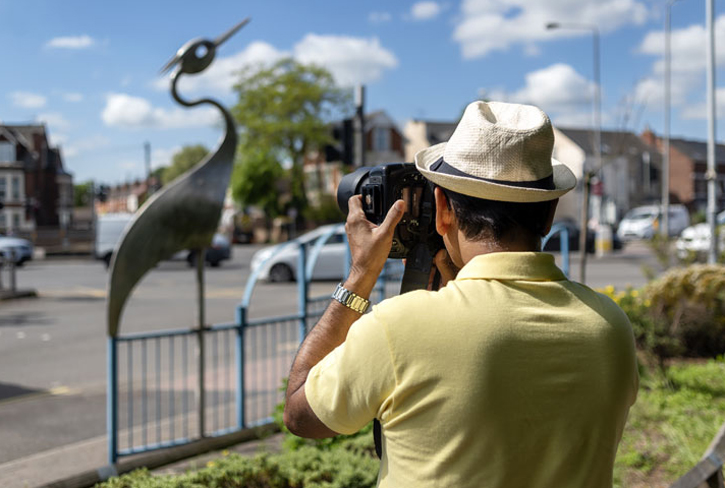
Although broadly not included in the remit of the sculpture project, we have also taken a targeted approach to record some church sculpture, recognising the important part that sculpture in ecclesiastical settings has played in the careers of some of our most notable sculptors. We have also collaborated with the Churches Conservation Trust in recording sculpture from 50 of their churches, and hope to continue working with the organisation in the future.
For each object that we photograph, our volunteers carry out an exhaustive search, primarily online. The information recorded includes the precise location of the sculpture (i.e. the full address, latitude, longitude and the grid reference), the sculptors, architects, designers, and foundries involved in creating the sculpture, and the names of who commissioned and funded the work.
We record the execution and unveiling dates of the sculpture, if we can find that information. This can be surprisingly difficult information to find; often even a contemporary sculptor's website does not give the date of their works. The listing status and the date of listing is recorded, and we also record descriptions and a range of other information about the subject matter of the work.
Volunteer Photographer Gordon Baird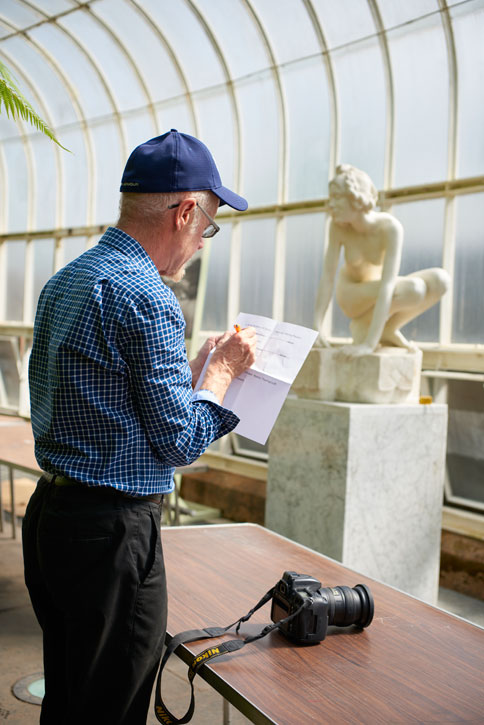
One of the most important things that we record is the gender of the subject for commemorative work, regardless of the type of sculpture. In the future, this will enable us to provide accurate statistics in answer to important questions, such as how many statues there are of women in comparison to those of men.
By the end of the Heritage Lottery funded phase of the sculpture project, our Volunteer Photographers had captured over 10,000 pieces of public sculpture, and had shot around 100,000 images. This was a remarkable achievement and we offer our enormous gratitude to them for giving their time and efforts so generously, and for already having captured so much of our sculptural heritage.
Photography was severely impacted by the coronavirus pandemic in 2020 and early 2021 but, having achieved further funding, the Volunteer Photographers recommenced photography in mid-2021 with the easing of restrictions. Most of the public sculptures across the UK had been recorded by the Volunteer team by the end of 2021.
Public sculpture is still being added to Art UK on a regular basis. Sculptors and artists are therefore advised to check their artist pages often, as more of their work may well have been added as images and data work their way through our editing and copyright processes. There is still a small number of existing works to be surveyed and we continue to record new public sculptures as they are unveiled.
The images taken by our Volunteer Photographers cover the whole of the UK. Indeed, many of our volunteers travelled hundreds of miles during the course of the project in order to photograph sculpture. The locations they have visited include some of the most remote areas in the country. In these images, you can see our Volunteer Photographer, Dewi Owens, using a mountain bike to travel to the Glendoe Eagle by Tom Mackie. Erected in 2009, the bronze sculpture is sited 730 metres above sea level, high in the Monadhliath Mountains.
Volunteer Photographer Dewi Owens, high in the Monadhliath Mountains
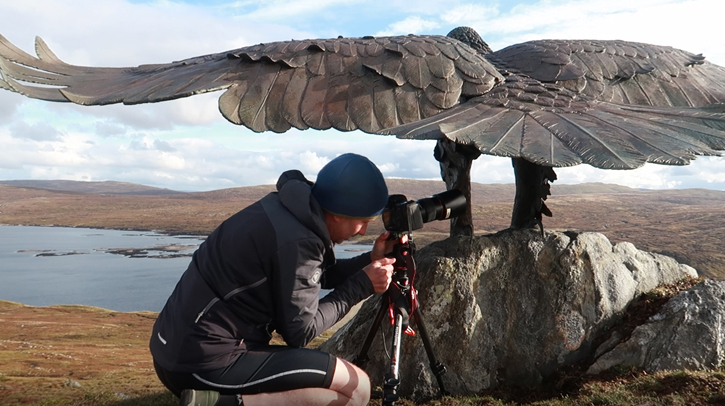
The image below, also taken by Dewi Owens, is of a sculpture titled The Unknown by Kenny Hunter, erected in 2012. It stands on the summit of a low hill surrounded by Borgie Forest, in the Scottish Highlands. In all likelihood, it is the most remotely situated sculpture that we have recorded to date.
The Unknown
2021, grey cast iron by Kenny Hunter (b.1962) 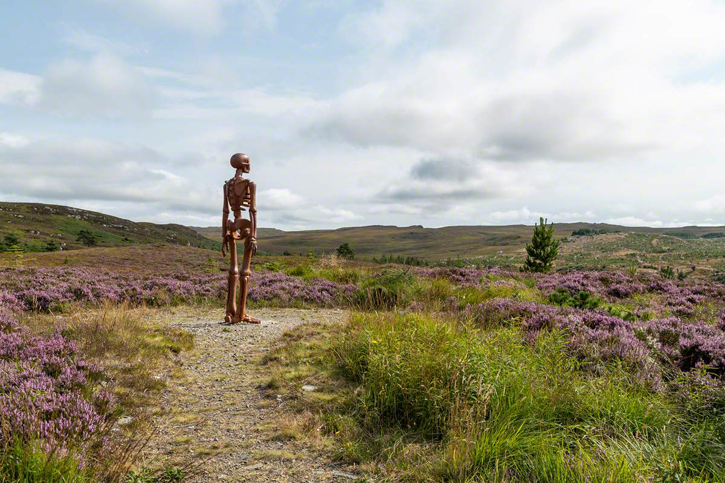
Sadly, many of the sculptures that we have recorded have suffered from the ravages of time, evidencing various degrees of erosion, breakages, and damage from the elements. The work can also suffer repeated vandalism. Unfortunate though this is, the purpose of the website is to record sculpture as it looks today. This is particularly important if people using the website intend to travel to view sculpture in person. A sculptor's website (where available) is a useful resource for those who wish to see sculpture as it was when erected or unveiled, as these archives are more specifically a 'showcase' of an artist's body of work.
Indeed, over the span of the project, our Volunteer Photographers have been able to capture sets of images of sculpture that has been damaged, moved, or restored.
The images below show the Highland Light Infantry Memorial in Kelvingrove Park, Glasgow, by William Birnie Rhind, erected in 1906. In a remarkable set of images on our website, our Volunteer Photographer, Gordon Baird, photographed the war memorial before the vandalism that took place in February 2019, immediately after the vandalism took place, then immediately after the restoration in October 2019.
Highland Light Infantry Memorial
Before vandalism took place (left); after vandalism took place (centre); immediately after restoration (right) 